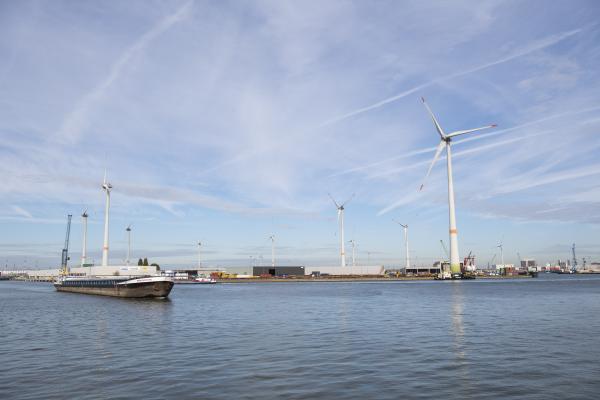
A JRC study looking into key energy figures of nearly 7,000 reporting cities finds that fossil fuels have the greatest weight in baseline total consumption (around 70%), followed by electricity (around 23%), district heating and cooling (up to 6%) and lastly, renewable fuels (up to 3%). The numbers reported by the cities show that residential buildings account for the highest share in consumption, followed by private and commercial transport.
With reference to baseline local electricity production by EU-27 signatories, photovoltaics has the highest share (up to 60%), followed by hydroelectric power (up to 25%), wind power and combined heat and power (CHP). On the contrary, for non-EU-27 signatories, the highest shares of local electricity production are associated with CHP (up to 55%), hydroelectric power, and geothermal power.
The study Covenant of Mayors 2022 Energy figures analyses and compares energy data and actions undertaken by each individual reporting city, including energy consumption and energy supply, as well as estimates in energy savings and energy production by 2020 and 2030 in different sectors.
The renewable energy production estimated by EU-27 signatories is 0.65 and 1.05 MWh/year per capita, respectively for 2020 and 2030 commitments. The figures reported by non-EU-27 cities is lower, with estimates of 0.18 and 0.24 MWh/year per capita for 2020 and 2030 commitments, respectively.
The data suggests that the transition to a greener energy system requires more time and additional efforts to reach EU climate targets.
Different cities had joined the Covenant of Mayors in different periods since its launch in 2008 and have developed plans to lower their greenhouse gas (GHG) emissions at different points of time, referring to the EU climate target then in place. As of 2021, these targets are updated and set at achieving net greenhouse gas (GHG) emissions by at least 55% by 2030 and becoming climate neutral by 2050.
According to the evidence collected in this report, one third of all EU-27 signatories with 2020 commitments (36% out of 548 signatories) outperformed their initial savings targets, although this figure is lower for EU-27 signatories with a 2030 commitment, where about only one fifth (18% out of 307) outperformed their initial targets.
As for non-EU-27 signatories – bearing in mind that the sample contains a low number of examples – the accomplishments of those with 2020 commitments show more encouraging figures, with more than half (58% out of 38 signatories) outperforming their initial savings targets. On the other hand, possibly because their overall ambition is much lower, almost all the non-EU-27 signatories with a 2030 commitment (95% out of 19 signatories) outperformed their initial targets.
Cities for climate action
The Global Covenant of Mayors for Climate and Energy (GCoM) stems from an initiative launched by the European Commission in 2008. The JRC has since provided scientific, methodological, and technical support, assisted signatory cities in preparing and implementing their climate and energy action plans, and contributed to the definition and regular update of the reporting framework.
Today, the GCoM initiative gathers more than 11,000 cities whose work builds on three pillars: climate mitigation, climate adaptation, and energy access and poverty.
The study analyses GCoM signatories with 2020 or 2030 commitments, i.e. a total of 6677. For the EU-27 bloc, about 80% of these are predominantly Italian, Spanish and Belgian cities. In the rest of Europe, 67% of a total of 193 signatories with a 2020 commitment are mainly located in Ukraine, the UK and Bosnia and Herzegovina; while some 90% of the 140 cities with 2030 commitments are mostly from Ukraine, Bosnia and Herzegovina and Moldova.
Energy savings
The findings show that the gross energy savings accomplished by EU-27 signatories with a 2020 commitment amount to 117 TWh/year (equivalent to half of the Greek total primary energy consumption in 2021) and 27 TWh/year for 2030 commitments (equivalent to the total Cypriot total primary energy consumption in 2021). The highest yearly saving rates for the 2020 commitments was reported by Dortmund (Germany) in the period 1990-2008, with 1.45 TWh/year. Mariupol (Ukraine), Budapest (Hungary) and Marbella (Spain) follow for different reported periods with corresponding savings rates of, 0.95, 0.85 and 0.72 TWh/year, respectively.
As for the 2030 target period, Dublin (Ireland) stands ahead of the rest, with absolute savings of 6.11 TWh/year between 2006 and 2016, indicating an annual saving rate of 0.6 TWh/year.
Other European signatories, outside the EU-27 block, with good accomplishments for the 2020 commitments are the Ukrainian cities of Vinnytsia and Mariupol (the latter fell to Russian control in May of 2022), and UK’s Cardiff. Referring to the period between 2010 and 2018, Vinnytsia’s absolute savings of 3.67 TWh/year indicate an annual savings rate of 0.46 TWh/year; while Mariupol, in a slightly longer period (2010-2020), recorded higher figures: 9.5 TWh/year of absolute savings, corresponding to annual savings rates of 0.95 TWh/year.
Cardiff’s absolute savings of 2.36 TWh/year between 2005 and 2015 translates into an annual savings rate of 0.24 TWh/year and, whereas Gradiška, Tuzla and Lukavac in Bosnia and Herzegovina stand out for their savings towards the 2030 commitments.
Between 2005 and 2017, Gradiška achieved an annual savings rate of 0.02 TWh/year. Tuzla’s efforts for the 2002-2020 period point to annual savings rates of 0.01 TWh/year. In the reported period 2010-2020, Lukavac recorded an annual savings rate of 0.01 TWh/year.
What helped these cities perform better than others? A few examples
Dublin’s success is attributed to a transformation of the transport sector: emission cuts reached 41% in 2016, compared to 2010 levels. This was achieved by encouraging the use of efficient electric vehicles (almost all new cars registered in the said period were efficiency band A) as well as by making cycling safer and more attractive - more bicycle lanes resulted in tripling the use of bikes).
During the same period, the Irish capital also turned its attention to the buildings sector, which accounts for approximately 65% of the total energy consumed, according to the action plan. Interventions centred on the smart use of energy and energy efficiency in households, new lighting systems and retrofitting opportunities. The results demonstrate an overall reduction of around 2 TWh/year, representing a 34% reduction in energy use and a 37% reduction in carbon emissions.
Mariupol, a signatory since 2013, had been performing remarkably well until the invasion of Russia. The figures, updated until the end of 2020, report a 16% reduction of emissions compared to 2010. Key to this achievement was the renewal of the municipal public transport, a top priority for the city considering this sector served 35% of the annual passenger turnover of 140 million passengers.
With the support of international financial institutions, Mariupol introduced 72 modern, low-floor, energy efficient and environmentally friendly trolleybuses, which replaced depleted vehicles and increased service levels. Additionally, the city modernised and strengthened its trolleybus infrastructure with the introduction of electrical substations and a cabling network. These are just some of the measures that allowed Mariupol to outperform its initial estimations of EUR 1.35 million per year of monetary savings, 2,704 MWh/year reduction of energy consumption and an emissions reduction of 1,369 tCO2.
Background
The Covenant of Mayors is an initiative that brings together local governments committed to reducing their greenhouse gases emissions to complement national strategies to increase resilience to climate change and alleviate energy poverty.
The strategies and actions they intend to implement to achieve their targets are steered by the Sustainable Energy and Climate Action Plans (SECAPs), for which the JRC provides guidebooks tailored to regional environmental, socio-economic and political circumstances. The JRC also analyses the data reported by the signatories to identify their progress.
Related content
Details
- Publication date
- 6 June 2023
- Author
- Joint Research Centre
- JRC portfolios




